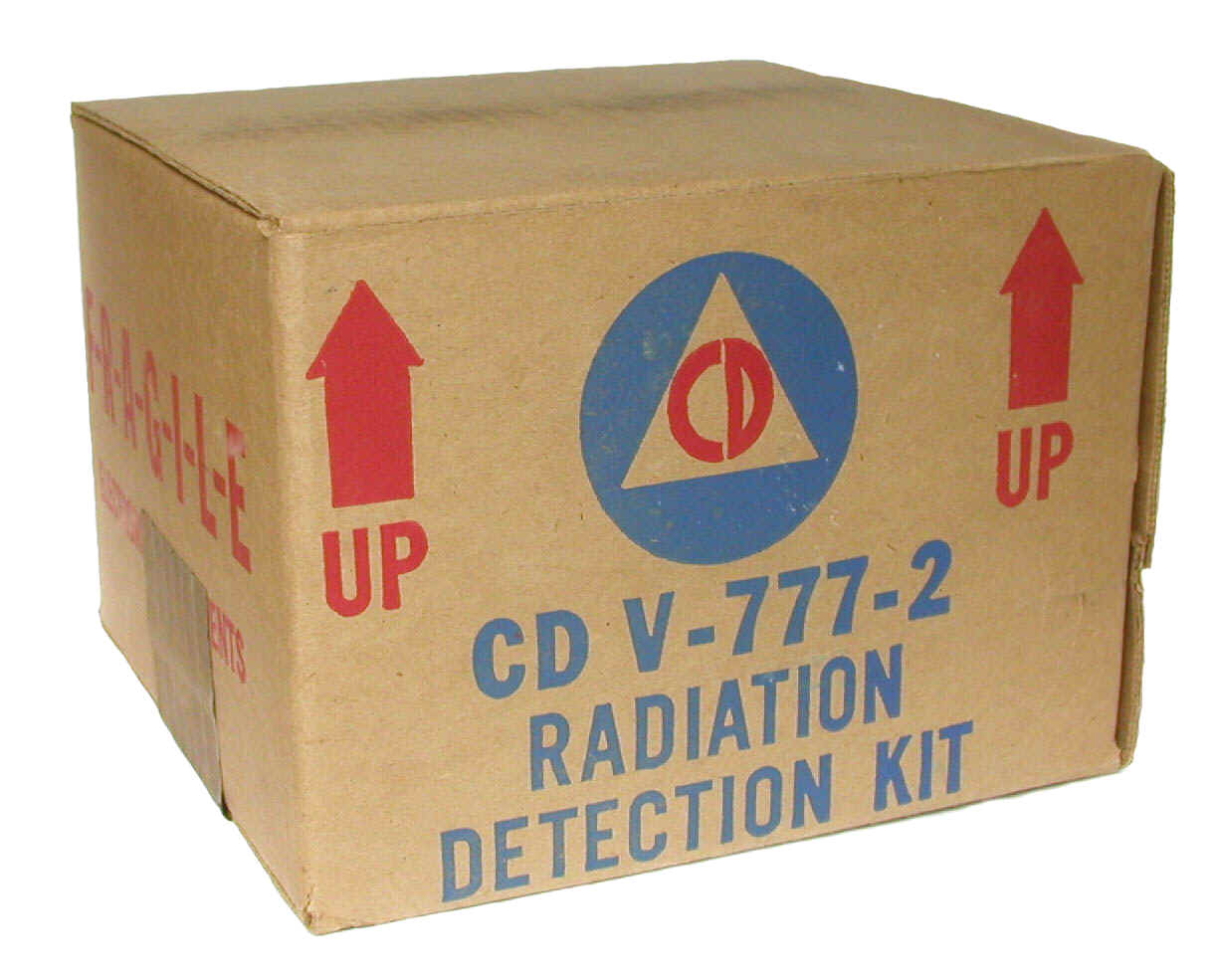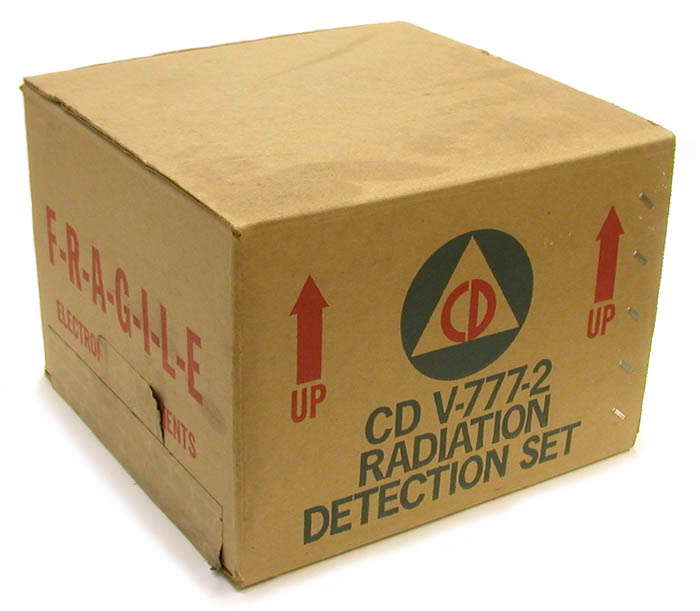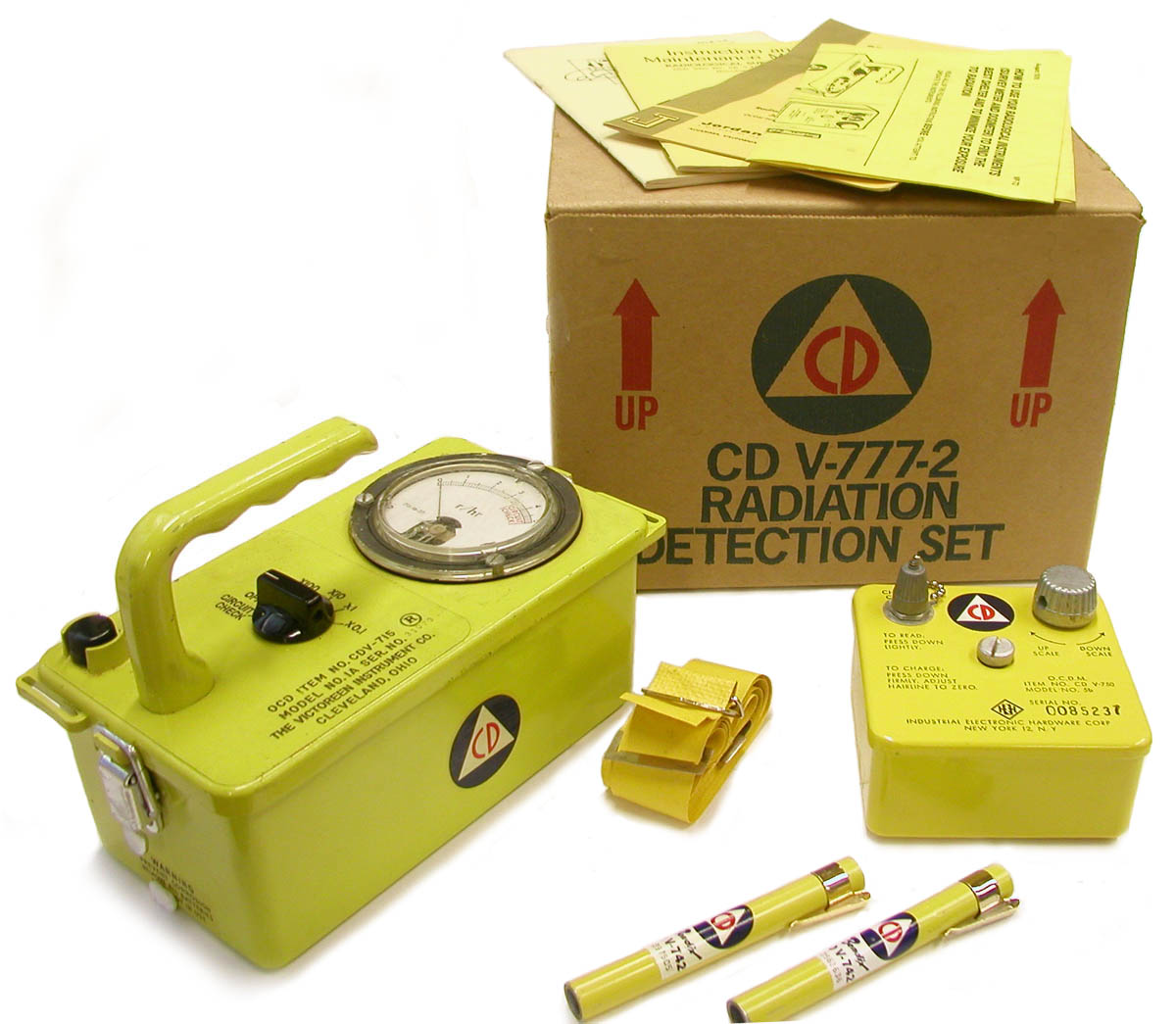CD V-777-2 Set for Public Fallout Shelters
For additional details about the various CD V-777 sets, go to the General Information section.
The FEMA publication CPG 2-2, Use of Civil Defense Radiological Instruments for Peacetime Radiological Emergencies (1991), indicates that the recommended composition of the CD V-777-2 "Radiation Detection Set" is: one CD V-715 ion chamber, six CD V-742 pocket dosimeters, and one CD V-750 charger-reader.
The Defense Civil Preparedness Agency publication Radiological Defense Instruments, CPG 2-6.1 (1978) states that the CD V-777-2 set was being issued for public shelters, while CPG 2-2 described the CD V-777-2 set as "the standard set recommended for public fallout shelters".

Size: 10" x 10" x 7"

Size: 10" x 10" x 7"
The box above left, the one using the word "kit" rather than "set," is the older of the two.
Quoting the FEMA document Guide for the Design and Development of a Local Radiological Defense Support System. CPG 1-30 (1981): "A minimum of one set is needed for each public shelter specified for use in the community shelter plan."
It seems that the CD V-777-2 was intended to fulfill the role that had previously been played by the CD V-777-1 set, i.e., to serve as the instrumentation set deployed at public shelters. When the CD V-777-2 instrument set came along, the CD V-777-1 set (which at one time had the words "Shelter Radiation Detection Kit" on the box) was then designated, to quote Radiological Defense Preparedness (CPG 2-6.1), as the "alternate set for emergency service use." Since CPG 2-6.1 was published in 1978, and since it contains a description of the CD V-777-2 set, it seems reasonable to assume that the CD V-777-2 set was first produced sometime in, or before, 1978. As best as I have determined, there are no references to the CD V-777-2 set in the DCPA annual reports for the years up to and including FY 1975. Hence my suspicion that the set was first produced between late 1975 and early 1978.
This is the one CD V-777 instrumentation set that does not include the CD V-700 GM survey meter. According to Marlow Stangler, the only real operational function ever attributed to the CD V-700 was to monitor food and water for contamination—it was primarily a training instrument. The folks in the civil defense program eventually concluded that using it to monitor food and water was not practical. Hence the absence of the CV V-700.

FEMA recommended that these shelter kits be stored in a bulk repository maintained by the locality rather than in the shelters themselves. An exception was permitted if the shelter had sufficient space and the necessary security for such storage.
The following text from CPG 1-30 Guide for the Design and Development of a Local Radiological Defense Support System (1981) provides a nice summary of what the shelter monitoring capabilities should consist of:
"Shelter Radiological Monitoring Capability—for monitoring and assessing the radiation environment for shelterees. It is necessary to:
- Find the best protected area in the shelter
- Evaluate shielding improvements made in the shelter
- Measure and control the radiation exposures of the shelterees
- Assist in determining when short trips may be made outside the shelter for essential items such as food, water and medical aid"
CD V-777-2 set donated by the State of Wisconsin courtesy of Michael Mack.
References
- Marlow Stangler. Personal communication.
- Defense Civil Preparedness Agency. Radiological Defense Preparedness. CPG 2-6.1. April 1978.
- Federal Emergency Management Agency. Guide for the Design and Development of a Local Radiological Defense Support System. CPG 1-30. June 1981.
- Federal Emergency Management Agency. Use of Civil Defense Radiological Instruments for Peacetime Radiological Emergencies. CPG 2-2. 1991.
